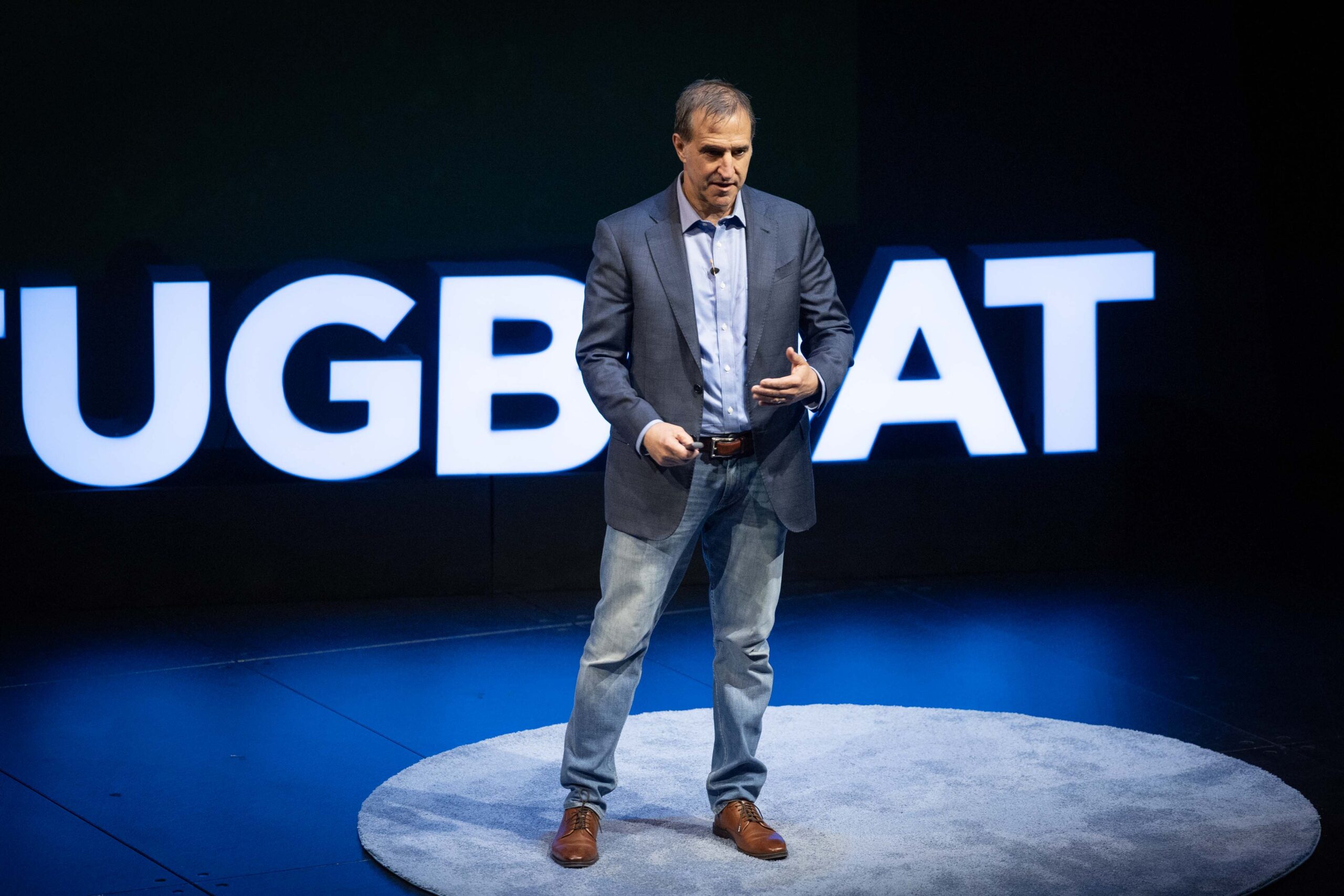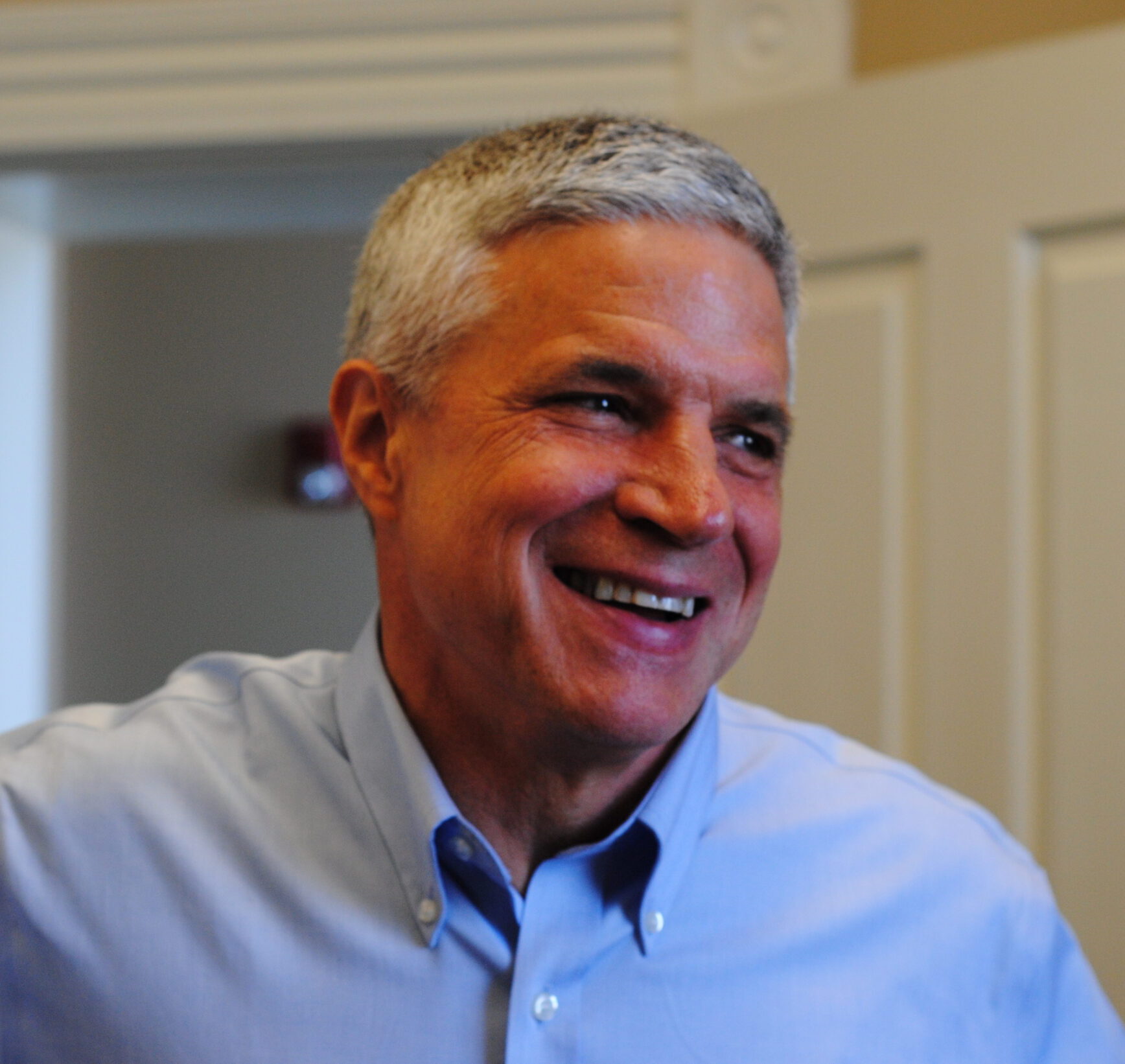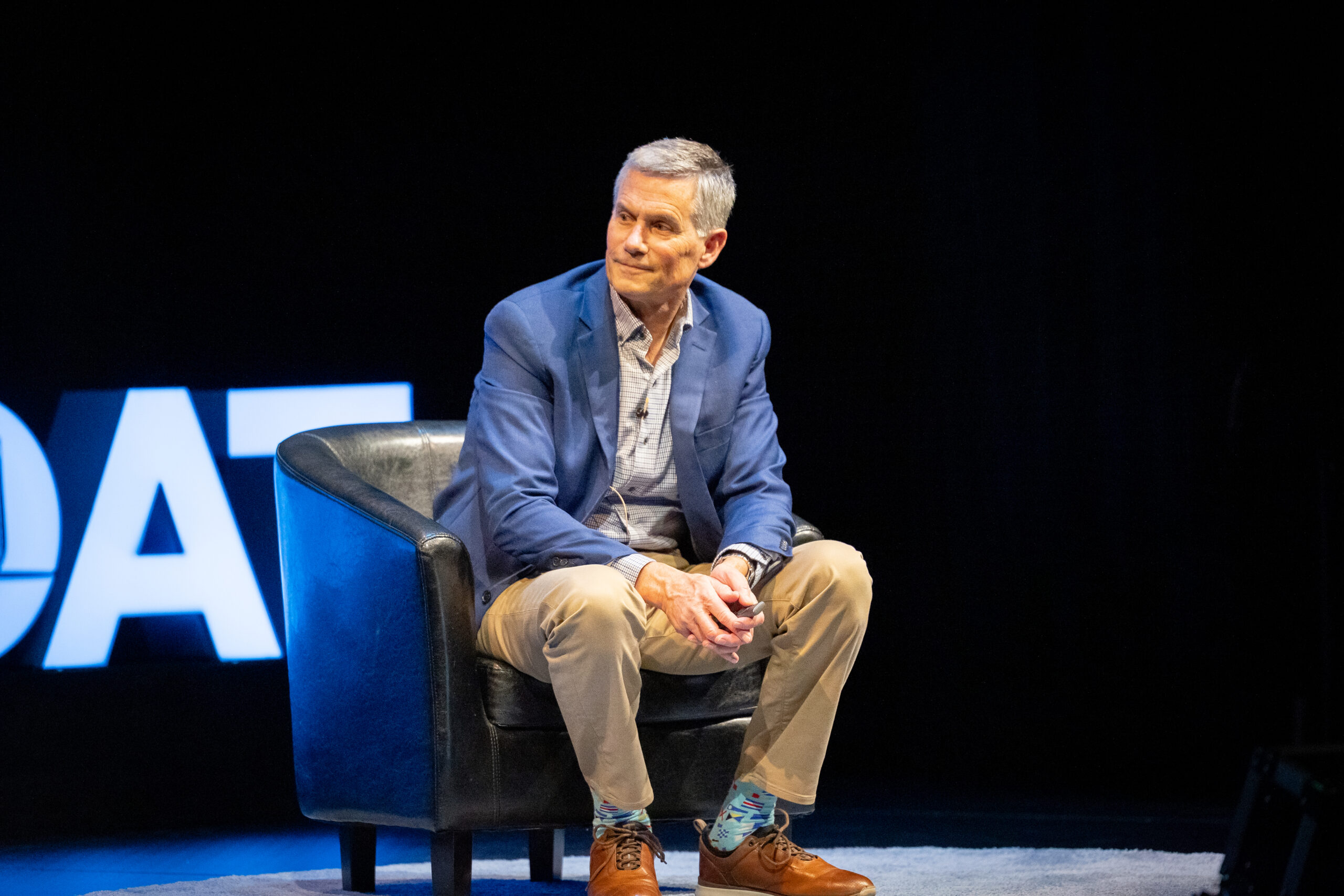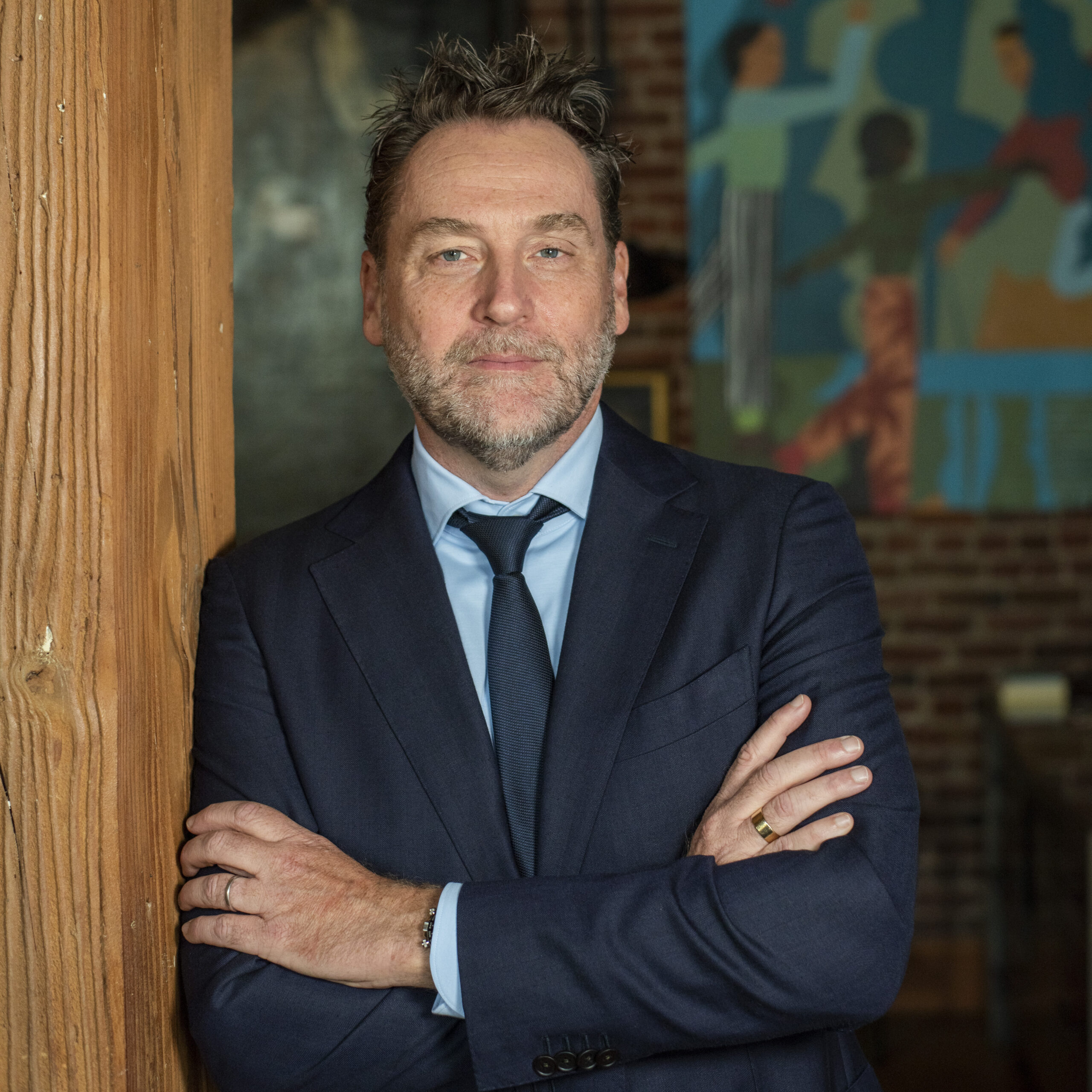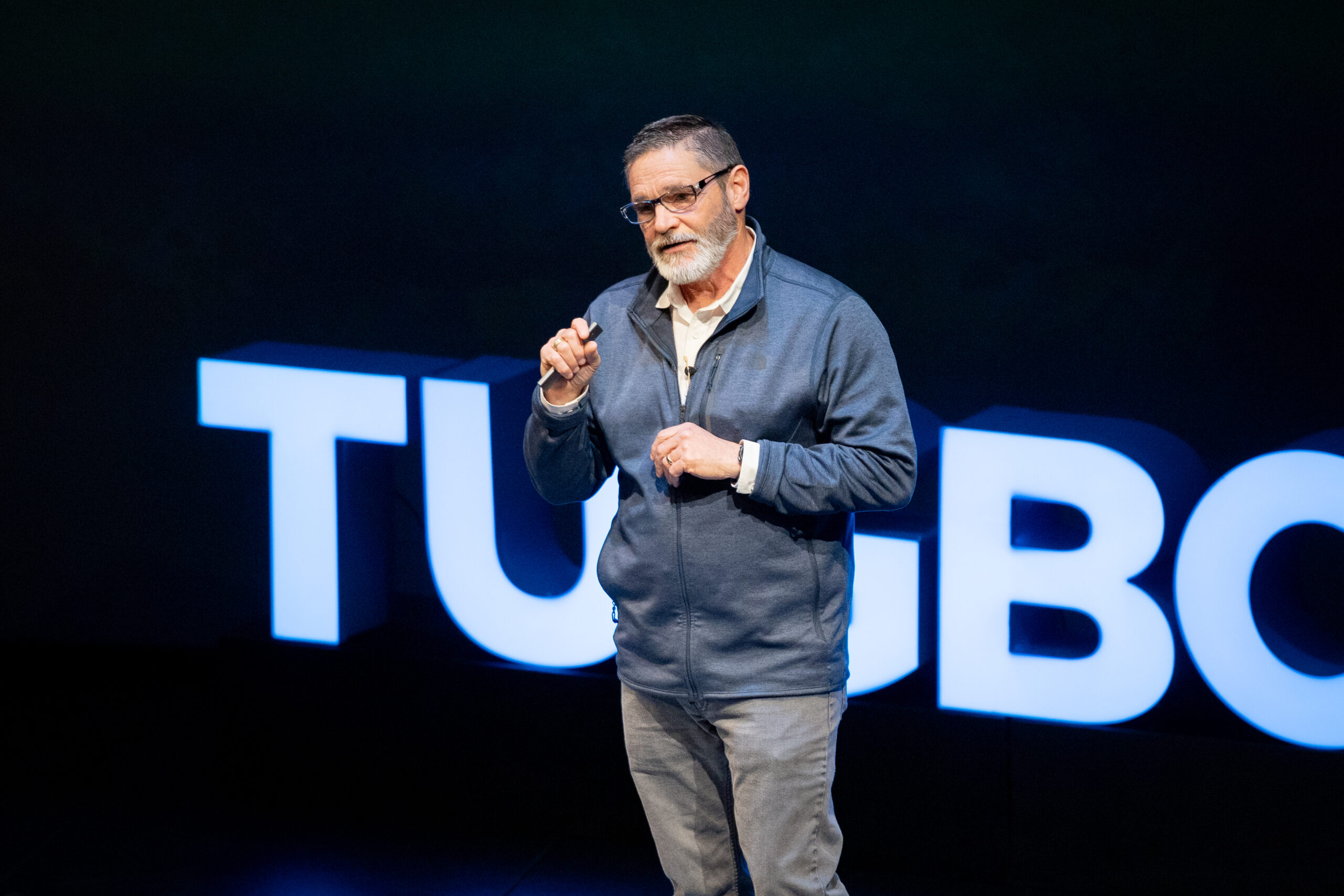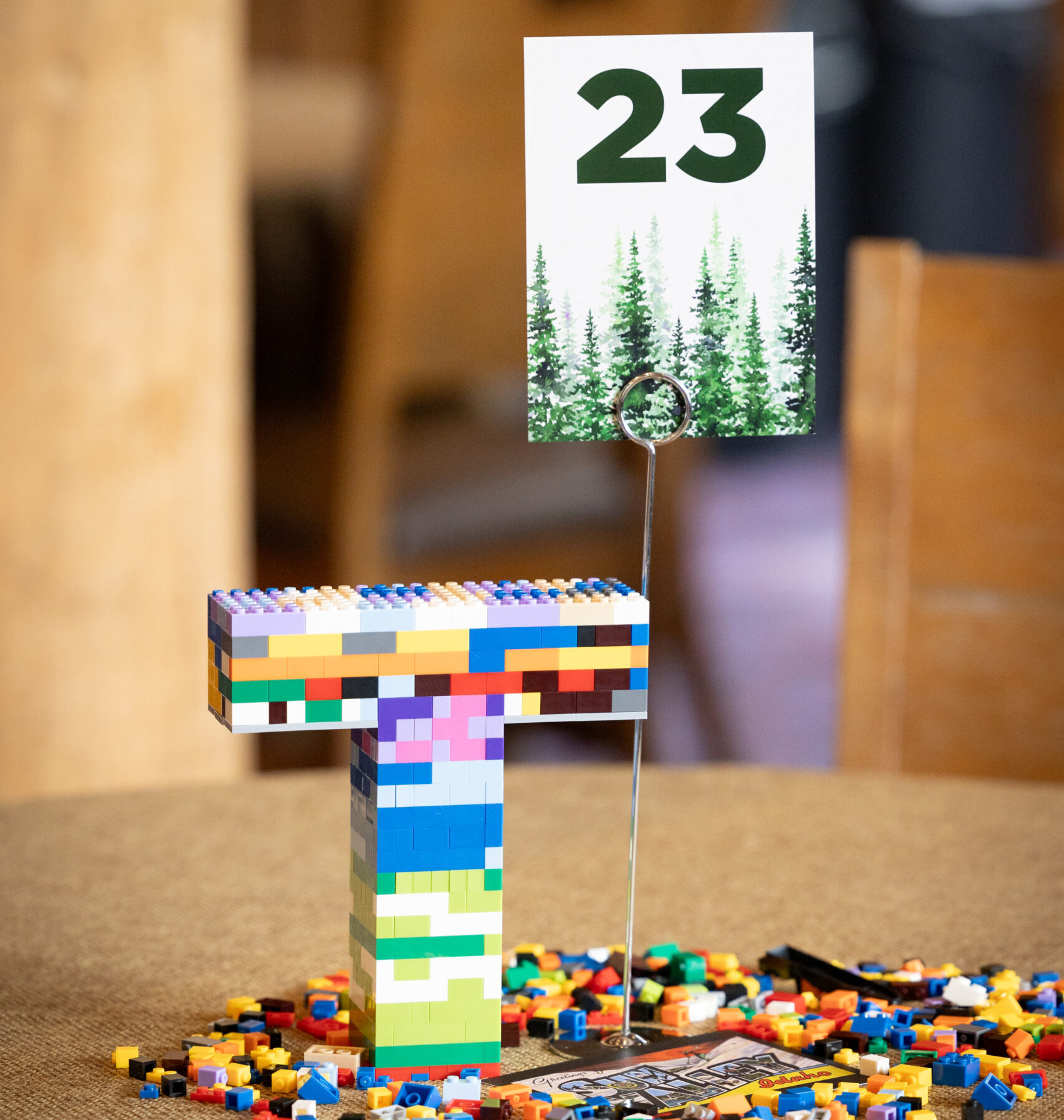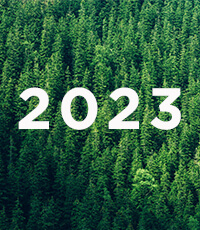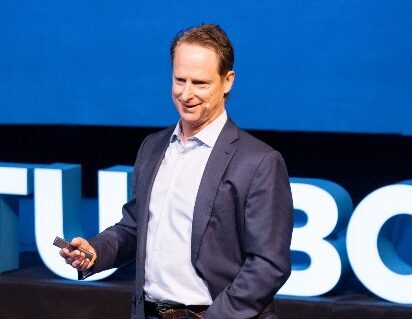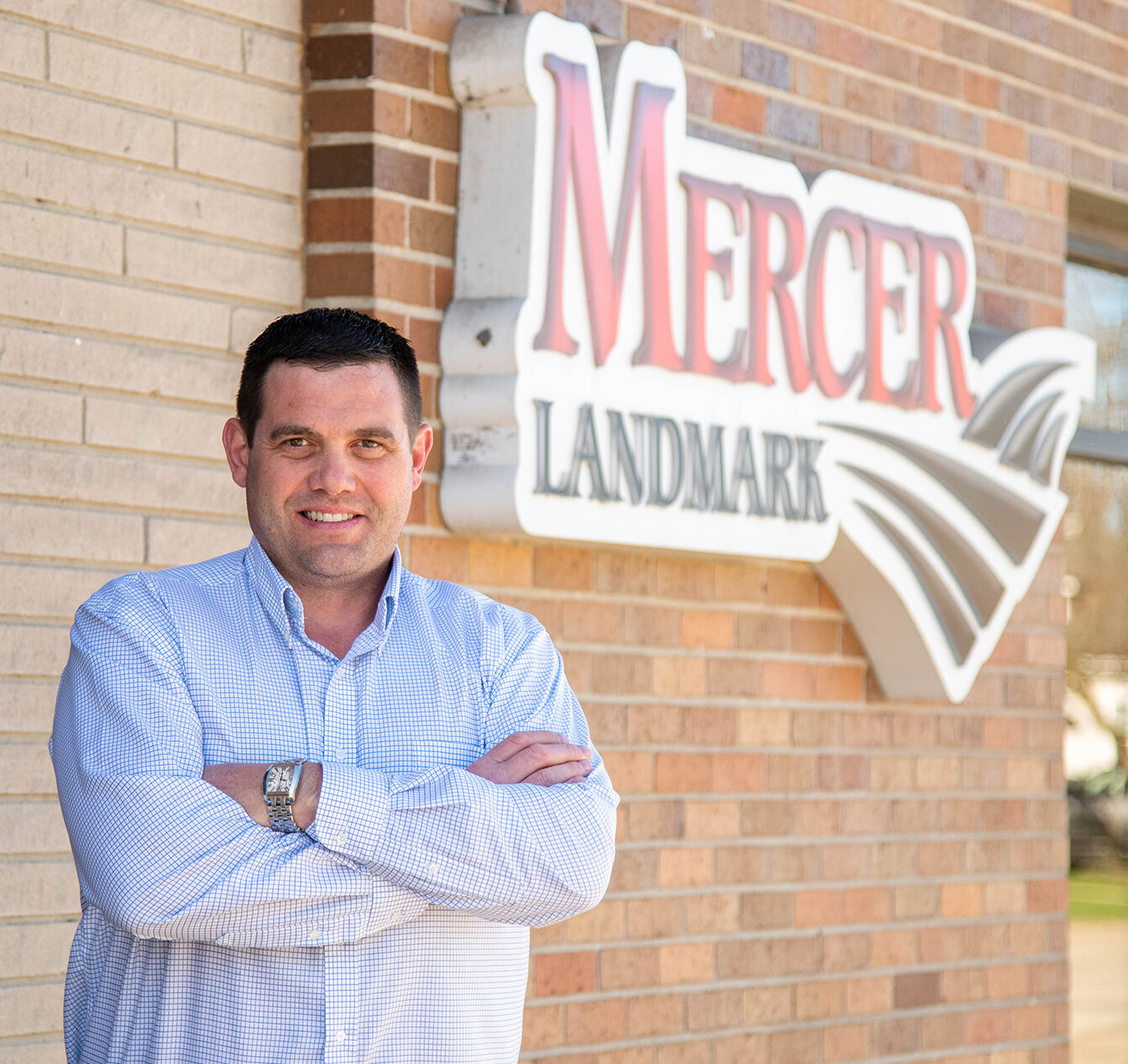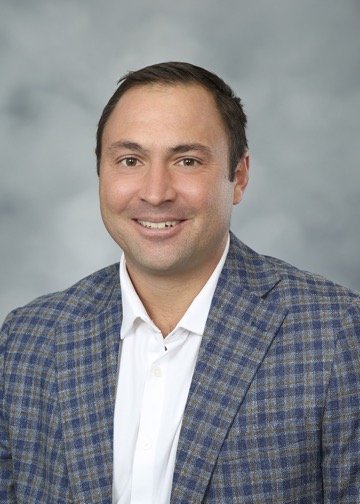Navigating the Challenges of a Dramatically Shifting Energy Landscape
Scott White, CEO of IGS Energy, has had a front row seat to the complexity of the energy industry and to what happens when shortages occur his whole life; he grew up with a parent who ran a natural gas company. Scott believes that the changes we can expect in the coming years will be even more challenging than the last five decades. As the global demand for energy continues to grow, we will need to grow and expand our capacity to meet it, but it won't happen overnight.
In this Tugboat Institute® talk, Scott discusses the various means by which our society might allow for a sustainable increase in energy demand while protecting grid resiliency and maintaining affordability. In particular, he shares some specific strategies business leaders can employ to protect their companies against eventual shortages and price volatility.
Watch and be inspired to think about how you and your company can innovate and tackle energy challenges.
Paddling for a Purpose
This is a story about the evolution of the Evergreen® business I founded in 1977, The Motz Group. It is also a story about me and my personal journey as I approach the end of my career and the next phase of my life. As I suspect might be true for most Evergreen founders and leaders, the two journeys – the professional and the personal – are deeply intertwined.
Motz is a Natural & Synthetic Turf & Field Construction company. We create and supply infill products for outdoor spaces where people move, play, and compete. Our team is also driven by Purpose, which is reflected in every aspect of our work. At Motz, we move people to better lives. As the company has grown over the years, we continue to intentionally partner with businesses and organizations that align with our purpose.
An important step forward happened in 2019, when I took a sabbatical for 90 days and embarked on a bike ride around the country. I spoke about this experience at Tugboat Institute® Summit in 2019. In many ways, it was the catalyst for the story I am going to share today. I set out to raise money to benefit Parkinson’s research and while my original intentions were somewhat modest and mostly personal, it became a Purpose effort that was embraced by The Motz Group. (link to my original talk HERE) It was powerful to see how engaged both our organization and the community became. When I returned, I was determined to level up our efforts at Motz to put our Purpose into action and to do it in a big way.
When I transitioned out of my longtime CEO role, my duties shifted away from leading the Motz enterprise, and one of my main objectives became the creation of a full, embracing, corporate strategy of moving a community of people to a better place. We recently launched the purpose arm of our business, Motz Moves. Motz Moves encompasses community engagement, owner engagement, and our business philosophy to make the biggest possible impact.
Our team has a great passion for giving back to the community. When we started to assemble the collection of these efforts under Motz Moves, they became even more engaged. We offer four paid days off for every employee to engage in volunteer work that is meaningful to them. We also established a corporate service day, where we work together toward a specific cause. These are just a couple of examples of how we empower our employee owners and support community partners in creating positive, lasting change.
As I approached my 70th birthday, I felt the urge to do something to commemorate this milestone in my life. Drawing from the extremely rewarding experience I had in 2019 on the bike, on my 65th birthday, I decided to undertake a new challenge.
Beginning in January of this year, I started building a canoe. I started from a tree, cut it down, and milled the wood with the goal of making it into a river-worthy canoe. On June 29, I will embark on a 3,000 mile canoe expedition that will start in Cincinnati, go down the Ohio River, up the Mississippi, up the Illinois and into Lake Michigan, cross over into Canada, go through the Northern Tier, back down Lake Huron to Lake Erie, and then down the Ohio to Cincinnati to complete the loop. For about a third of the trip I will travel downstream, a third will be flat, and a third upstream.
The impetus for this trip was largely personal, to be sure. I have moved out of the CEO role I occupied for so long and like other Evergreen founders and leaders in my position, I was eager to find meaning and purpose as I start my Second Act. As I approach my milestone birthday, I want to accomplish something difficult, prove I am still physically fit and mentally strong, and have the perseverance needed to stay the course. But unlike my bike trip, from the start, this initiative has been closely tied to Motz, our Purpose, and ways in which we can elevate our work in our communities.
This trip, which is called Paddle for a Purpose, will benefit an organization called The Bridge Adaptive Sports & Recreation, which increases awareness and promotes opportunities for individuals to participate in adaptive sports and recreation in order to improve their quality of life. Participating athletes have experienced significant challenges in their lives – stroke or multiple ailments of disability, either nervous or physical – but there's tremendous opportunity for them to still enjoy an active, vibrant life, versus just surviving. Helping further the work of this organization is exactly in line with our purpose of moving people to better lives. So, I have shared and will continue to share my progress, starting with the canoe build and on through the expedition itself, with my entire team. I’ll be posting weekly videos to the Motz Moves social media channels so anyone can follow the expedition. Our team and supporters can get involved in so many ways.
First, there are a lot of logistics involved in planning the many phases of this trip; this effort is a piece that the team is and will be involved in. Our marketing team is collaborating with The Bridge to get the word out, so more people are aware of the opportunity to engage and support. Company-wide, people are joining in to create a spirit of camaraderie on the water together. There'll be multiple places where team members, athletes from The Bridge and other interested groups and individuals are going to join for a day, paddling for a purpose together. And then people are working together on other initiatives that correspond to this, to further increase our impact.
Beyond Motz, there's an incredible cottage community of volunteers called River Angels. It's much like on trails; people are happy to help when you pass through. I imagine they’re thinking, "Gosh, this poor soul is out there paddling away. We're going to offer him up a cold drink or a bite to eat." I see a lot of opportunities to interact with the local communities as I move through them. What excites me the most is just really getting to know people across the Midwest, because it's always the serendipitous meetups, just salt of the earth people, that re-instill your faith in humanity.
I think circles are powerful. The metaphor of traveling a great distance to end up where you started, but having gained so much knowledge and experience, is powerful. And the ripple that a circle on the water creates, when a pebble is dropped or a paddle touches the water, is meaningful as well. The excitement around this initiative is growing like a ripple – getting broader and reaching farther in all directions.
As I plan and prepare for this trip, I can’t help but think how much my expedition is like both business and life, especially for the Evergreen leader. Sometimes, for example, we’ve got to paddle against the flow. I've experienced paddling against the flow, and you really have to learn to read the water and all the nuances to make any progress forward. Just like everything else, it seems like the hardest sections and the hardest challenges teach you the most. The reward of accomplishing something that you were not sure you could do, and that makes people’s lives better, is priceless.
To follow Joe’s Paddle for a Purpose journey in real-time and learn more, visit motzpaddleforapurpose.org. You can also follow us on YouTube, Facebook, Instagram and LinkedIn!
Persevering One Step at a Time
When Steve Doerfler and his partner bought out their boss at Metalcraft in 2006, they knew that they would have to work hard and overcome obstacles to help their new company grow and thrive. Many of them, however, both professional and personal, were entirely unexpected and unique.
In this Tugboat Institute® talk, Steve shares his journey of leadership through the buyout, several years as President, over a decade more as CEO, and now as Chairman. Although it has not been easy, it has shaped him as a leader and, he believes, made him better.
Watch and be inspired to turn your challenges into vehicles for strength and transformation.
Overcoming the Fallout of Hiring the Wrong CEO
In business, leaders are often reluctant to share stories of failures. However, like everywhere else, the most valuable lessons usually emerge from acknowledging and dissecting what went wrong. At Concentric, the security firm where I serve as Executive Chair, a few years ago we had a difficult experience that grew from a failure. We hired the wrong person into our top leadership position, and it cost us. While it was painful, we learned an enormous amount.
Hiring at all levels is important, and in all cases, a bad hire costs time, effort, and therefore money. In most cases, the damage – to the budget and to company culture – done by a bad hire can be limited by a quick reaction; if you can recognize and remove the person quickly, you can minimize damage done. But when you hire a CEO, the stakes are much higher and the process of recognizing and correcting the mistake can take much longer. This is our story.
As a founder, I was the first CEO of Concentric. When I was ready to step down from being CEO and hand it off to the next leader, I tapped the man who had helped me found the company in the beginning; he had contributed a great deal to building Concentric and had done a great job in previous roles. He was a good listener and a tireless worker, he made good tactical decisions, and he seemed able to bring different groups within the company together to form consensus and set projects in motion. His strengths in his previous roles, however, which gave me the confidence to move him into the CEO role, turned out to be his greatest weaknesses as the leader of the company.
It should come as no surprise that trust is a critical element of leadership and a high-functioning team. The executive team must trust the leader, and the entire team must as well. When I brought in this new CEO, I was comforted by the fact that he was a known entity, both to me and the company, and therefore, in addition to assuming he had the skills to get the job done, I made the leap to assuming that his long tenure equaled trustworthiness. A final, critical component of this situation was that this was a big transition for me, professionally and personally, to move from the CEO role into the Executive Chair role; I was heavily invested in the transition working out. For all these reasons, I allowed myself to be blind to some of the early signs that we had a problem.
Although it took me far too long to realize he was the wrong person for the job, in retrospect, the signs were there from the beginning. The lessons we’ve drawn from this experience fall into two categories: how to recognize and act quickly when your new CEO is not the right person for the job, and how to avoid making this bad hire to begin with.
When you are in charge, you can either choose to surround yourself with people who will think for themselves and challenge you when necessary, or with people who are your fans, who will laugh at all your jokes, and who will always agree with you. I did see early on that my new CEO was choosing to surround himself with fans. His skill at bringing people together translated into a strong desire for harmony and an aversion to pushing the envelope and asking hard questions. Instead of raising a red flag, I explained it away, and reminded myself what a good tactical decision-maker he had proven himself to be. In addition, a strong leader needs to have a strong North Star, and not be malleable, or susceptible to the influence of his team, whether they be superiors or subordinates. In the absence of this North Star, a bad leader can find themselves captive to the team below them, always shifting and changing to please the team. This was happening, and this is a warning sign that I overlooked – again, largely because I was so invested in this working and so convinced that trust was in place.
The initial allure of promoting someone from within the company, someone trusted and familiar, can sometimes blind decision-makers to the challenges of transitioning from an employee to a leader. It turned out that the skills that had made our new CEO successful in his previous roles did not transfer to his new position. This seems clear to me now, but I couldn’t see it at the time. I realized too late that the fit wasn't right, although the signs started to appear immediately.
In retrospect, I see that I could have prepared myself to look for and identify warning signs such as a lack of curiosity, an inability to challenge information, or a failure to articulate a compelling vision. Being on the lookout for things like this can help preemptively address potential leadership mismatches. However, even with vigilance, mistakes can occur, leading to a tumultuous period of cleanup and recovery.
The aftermath of a bad CEO hire is far-reaching, impacting not only internal dynamics but also client relationships and overall company culture. In our case, trust was eroded with many of our stakeholders, internal strife spiked up, and there were tangible negative effects on the company's bottom line.
Once I finally took action, there was a lot of work to be done. The bad CEO had broken trust with clients as well as knocking our internal culture off balance. I resumed the role of CEO and spent the next few months making an apology tour, to try to repair the damage done. During this time, we lost some clients and saw our revenues dip. These were concrete, financial, existential problems we were dealing with.
Internally, I instigated a cultural reset within the organization to mitigate long-term damage. A lot of relationships had been damaged, some beyond repair. There were people who saw the problems early on and were alienated because of it. Then there were the people who were holding sway over the CEO, who did not want to relinquish their position of power. We lost some people from both groups as we put the company back together.
Fortunately, when we were stabilized and ready for our next new CEO, I had a clearer view of what I was looking for and was able to find and hire a wonderful person for the role. This time, we sought a leader with vision and a strong sense of values, a true North Star that aligned with our Purpose, and a willingness to lead the team into new territory, even if it caused people to shift out of their comfort zones. We were lucky to find just the right person. Under his leadership, we have not only repaired the damage caused by the bad CEO, but we have doubled, and then tripled in size. Concentric is now thriving, and I am grateful that we were able to recover from that challenging setback.
In any company, the impact of the CEO is enormous, which means that the consequences of a wrong hire can be drastic. In Evergreen® companies, this risk is perhaps even greater because what gets damaged the most – relationships – is the bedrock of all People First, Purpose-driven organizations. Fortunately, Evergreen companies are also in it for the long haul, so if they have the will and the leadership to undertake to repair a broken culture, provided the financial mistakes are still repairable, they have the time to make it happen.
I hope our experience can help others avoid learning this lesson the hard way. It’s a mistake that can threaten the very existence of a company. In our case, we were fortunate; despite the setbacks caused by our failed leadership hire, Concentric has emerged stronger, with a renewed sense of purpose and direction.
The Inevitable Bridge: Giving Away Your CEO Role
For CEOs, and even more so for company founders, the prospect of stepping out of leadership, handing the reins over to your successor, and letting go of the company you have poured your heart into for years can be a challenge. Especially for Evergreen® leaders, who tend to be humble and gritty, their work has been a labor of love; they are so heavily invested in the success of their team, their team’s families, and their company that trusting it will be ok without them is almost akin to watching children go out into the world independently. But it must and will happen to all leaders.
In this Tugboat Institute® talk, Kris Maynard, founder and Executive Chairman of Cathedral Holdings, shares his own experience around this moment in his leadership journey. As a founder, he chose to step into the role of Executive Chair first, to ensure that the transition was smooth and gradual, but the end result is the same; someone else is in charge now. His story will shed light on this process for leaders who are looking toward this transition, and while his lessons learned will not make it easy, they will certainly help prevent surprises and prepare you for some of the more unexpected aspects.
Watch and be inspired to prepare for and thoughtfully shape your own transition out of leadership, when the time comes.
The Compounding Power of Community – Tugboat Institute® Summit 2024
At Tugboat Institute®, we frequently talk about the sources of competitive advantage afforded to Evergreen® companies. A key one is their commitment to profitable, Paced Growth over years and decades that leads to a powerful compounding effect. We see this compounding effect in capital over time, strength of culture over time, honing of know-how and innovation over time, and impact against their Purpose over time, to name several. This past week, at Tugboat Institute Summit 2024, the compounding effects of our growing membership, built over time on a foundation of trust, were on full display. It has allowed our membership to deepen past relationships while forming new ones, with authenticity and curiosity. It has allowed members to share their experiences, best practices, new ideas, setbacks, accomplishments, and inspiration with each other whether from the stage, on a hike, or over a meal. Our growing membership and the resources and feedback it provides us has also allowed us to launch new, exciting offerings, as illustrated by an announcement we made during our week together.
While bringing our like-minded leaders together is top of our list of priorities, learning is a close second when we have in-person experiences, and we spent two mornings learning from our peers and thought leaders aligned with our Evergreen values.
On the first day of talks, Professor Hermann Simon joined us, all the way from Bonn, Germany, to share his wisdom around Hidden Champions. Hidden Champions are medium sized, market-leading companies who are relatively unknown but who have captured an outsized share of their market and are export powerhouses. Alan Beaulieu, of ITR Economics, shared an update on his economic outlook for the coming years, specifically the great depression he sees coming in 2030. Tugboat’s own Dr. Gary Kunkle, research specialist and expert in sustained growth companies, shared a short perspective on the return on philanthropy, assuring us that in addition to doing good for good’s sake, Evergreen companies’ philanthropic efforts also have a positive effect on new and future employees and customers, and the bottom line. Tugboat member Jeff Patterson, Founder & CEO of Gaggle, next shared what he had learned on his quest for strategy, starting with clarity around the concept of strategy itself. Jeff Chungath, member and CEO of Telligen and a bio-medical engineer by training, shared the careful and meticulous work they do in his company to continuously improve all aspects of the business in an efficient and effective way. Dr Sonja Lyubomirsky, distinguished professor and researcher at University of California at Riverside, shared her research and data on happiness – what makes us happy, and what we can do to effectively increase happiness. Member John Burns then shared a short perspective on hybrid work; he finds that it gives his company, John Burns Research & Consulting, a distinct competitive advantage at a time when many companies are backing off from remote work. Dr. Denise Pope, Stanford professor and co-founder of Challenge Success, shared a talk about the importance of helping our over-scheduled kids find balance in today’s world. And Tugboat member Steve Doerfler shared a powerful talk about his personal and professional journey into leadership at Metalcraft, which was characterized by some unusual and difficult challenges. Finally, our first day of talks included a panel discussion, led by Stanford professor and longtime Tugboat friend Dr. Roberta Katz, between Dave Petersen, Vice Chair of the Board of O.C. Tanner, and Lisa Ingram, President & CEO of White Castle. Each of these respected leaders shared their philosophies on managing conversations around polarizing and political topics in their firms.
On the second day of talks, three more thought leaders, Sam Walker, Paul Seck, and Jeffrey Korzenik, shared their wisdom on various topics. Sam is the author of The Captain Class and shared his insights into the shared characteristics of the winningest teams of all time. Paul is a landscape architect whose firm regularly partners with engineers and city planners, and he shared how their collaborations make space for creativity to flourish. Jeffrey is an economist by profession and also a passionate advocate for Second Chance hiring. He shared the why and the how of this practice which is not only a solution to a societal problem, but to our country’s long-term labor shortage as well. In addition to these outside speakers, we heard from six Tugboat members on day two. In two short talks, member Kris Maynard spoke about his recent experience transitioning from founder & CEO to Executive Chair of Cathedral Holdings and member Paul Mears III shared the strategies that allowed him to find as much harmony as possible between his work as President & CEO of Hello! Destination Management and family commitments, both topics that touch all Evergreen leaders at some point in their lives. Tugboat members Scott White, CEO of IGS Energy, Elizabeth Glasbrenner, co-founder, President & CEO of Smiley Technologies, Brad Herrmann, founder & President of Text-em-All, and Kirk Aubry, President & CEO of Savage rounded out the day. Scott stepped on stage next to share his outlook on the energy landscape in the coming years, and what business leaders can do to protect themselves from potentially disruptive events and phenomena. Brad, whose company is early in its journey to become an Employee Owned Trust, shared what he has learned and what he loves about this unique ownership structure. Elizabeth shared how some enormous personal and professional transitions have shaped her outlook on life and her leadership style. And Kirk shared his compelling vision for what he calls the ‘Secret Sauce’ that is the true source of power of the Evergreen company – connection.
In addition to the inspiring and powerful learning that took place each day, we had the opportunity to celebrate our incredible community in the evenings. On one of these evenings, we had the honor to announce the first-ever Best Evergreen Companies™ list and the first Evergreen Company of the Year™. To learn more about this new initiative, aimed at elevating and celebrating Evergreen leaders and companies in our society, read the announcement here.
Over a decade into the Evergreen movement the compounding effects of this community were clear. New members felt it as they met their peers in person for the first time, returning members felt it as they sunk back into the atmosphere of joyous and authentic connection, Tugboat team members felt it as their pride in supporting such a wonderful group of people soared, and even our thought leader speakers shared that they felt it. What we heard many times from our members during this past week is that our community is different and truly special. We are not only bound by a unique and shared set of values and by the support we can offer each other as we walk the challenging path of leading an Evergreen company. We are also bound by the certainty, reinforced every time we connect, that despite the challenges, we are doing it the right way – the Evergreen way – and contributing to making life better for a great many people.
INTRODUCING THE INAUGURAL BEST EVERGREEN COMPANIES™ LIST AND EVERGREEN COMPANY OF THE YEAR™ AWARD
Since our founding in 2013, we at Tugboat Institute® have eagerly anticipated having a platform to publicly celebrate and recognize extraordinary Evergreen® leaders and companies for their impact in society and as vehicle to build general awareness of what it means to be an Evergreen company.
Today, we are thrilled to announce our inaugural Best Evergreen Companies™ list and the first Evergreen Company of the Year™ award winner!
First, we are honored to share the Best Evergreen Companies list, each of whom exemplifies excellence across all the Evergreen 7Ps® principles. Their dedication to their business excellence is characterized by determination, patience, and an unwavering desire to improve. As reflected in the list below, outstanding Evergreen companies exist in every industry from finance to technology, and from consumer packaged goods to construction. Their sizes, ages, ownership structures, and geographies vary widely as well, confirming that excellent Evergreen companies can and do exist everywhere. The winners are listed alphabetically, not in rank order, as we aim to celebrate each of these remarkable companies equally.
BEST EVERGREEN COMPANIES™
Awesome
Betts Company
Bishop-Wisecarver
ECRS
Edward Jones
Enterprise Mobility
Essential Ingredients
High Plains Bank
In Time Tec
John Burns Research & Consulting
Meijer
Radio Flyer
Redeemers Group
SAS Institute
Savage Services
Smiley Technologies
SRC Holdings Corporation
Stotz Equipment
Supportworks
Telligen
Test Double
Text-Em-All
The Motz Corporation
Torch Technologies
Some of these company names are household names that we all know and respect, while others may be unfamiliar. We encourage you to learn more about them, as some may be in your community, employ someone you know, or significantly impact the areas where you live. These and other Evergreen companies continuously strive to improve while staying true to their Purpose.
And with that, we are thrilled to announce the company that rose to the top in our assessment that we have named the very first Evergreen Company of the Year:
EVERGREEN COMPANY OF THE YEAR™
O.C. Tanner
Led by Tugboat Institute® member Dave Peterson, O.C. Tanner was founded in 1927 by Obert C. Tanner and initially made class rings and commemorative pins for high school and college graduates. Almost a century later, the company has evolved into a complex market-leader in employee and customer appreciation software and consulting. Obert Tanner’s primary goal was always to serve his customers and his community to the best of his abilities, often going above and beyond for them, and to find ways to give back to his community, specifically in education, wherever possible. His spirit and intention are alive and powerful in the company today.
O.C. Tanner hosted Tugboat Institute @O.C. Tanner in Salt Lake City in 2023, and it is an exemplar of Evergreen excellence indeed, across all the Evergreen 7Ps® principles. Their Purpose is simple but powerful: To help people everywhere thrive at work. They are ethical above all else and their People First culture and policies are second to none. Their attention to Pragmatic Innovation has allowed them to evolve and essentially enter a new industry, re-inventing themselves to stay competitive and thriving as the world changed around them. Their growth has been thoughtful and Paced, allowing them to Persevere for the long term, through good times and bad. Over time, they have been consistently Profitable, which has enabled them to be better and better at innovating, supporting their people and communities, and broadening their reach, both geographically and through a number of industries. Finally, there is no better example of a Private company. Obert Tanner was committed to ensuring that his company would last, that it would always be privately held, and that ownership and leadership transitions would happen seamlessly and without strife. His work on this front is indeed another example of extraordinary innovation.
O.C. Tanner represents the best of what it means to be an Evergreen company. They are a wonderful example and confirmation of what is possible, when a company commits to this path and has the patience to let their success build and compound over time. We are honored to award them the very first Evergreen Company of the Year designation.
MORE ABOUT THE BEST EVERGREEN COMPANIES™ LIST AND EVERGREEN COMPANY OF THE YEAR™ AWARD
The Best Evergreen Companies list and the Evergreen Company of the Year award give us, at Tugboat Institute®, an opportunity to celebrate and elevate wonderful Evergreen companies and our Evergreen movement, in a language that society understands. We chose not rank order our Best Evergreen Companies list to avoid unnecessary competition between these exceptional companies that earned a spot on the list, allowing us to celebrate all equally. Companies become eligible for inclusion on this list by either becoming Certified Evergreen® or by hosting two-and-a-half day Tugboat Institute Exemplar Visit. Both of these paths require a deep, introspective dive into practices across all of the Evergreen 7Ps® principles, and provide tangible measures of Evergreen maturity across each of the principles and into overall excellence. The winner of Evergreen Company of the Year in turn will be awarded to one company that truly distinguished itself over long periods of time thus earning the extra recognition of this pinnacle award that can be won only once.
In the years and decades to come, our vision is for this recognition and award program to gain increasing awareness and scope over time, moving from a single list to several that celebrate and recognize even more Evergreen companies across various sizes, industries, demographics, and geographic regions. We believe that lifting up one Evergreen company lifts up all Evergreen companies, and we are pleased to have created this new program to do just that.
On Purpose
In 2022, at Tugboat Institute® Gathering of Teams, Tugboat CEO Dave Whorton shared a talk entitled On Purpose. At the time, we were approaching our ten-year anniversary and our Evergreen® community had grown and matured a great deal. Everything Dave, and all of us at Tugboat Institute, had learned from our incredible members and friends over the years had confirmed Dave’s thinking about the power of the Evergreen company back in 2013, when he set out to create Tugboat Institute. As he honed his vision and planning for the future of this important group, he reconsidered the Evergreen 7Ps® principles and decided it was time to revise our definition of Purpose.
We have decided to re-share this important talk two years later, because our community continues to grow and our circle of friends and followers is growing quickly as well. Purpose lies at the heart of what it means to be an Evergreen leader and company. Whether you watch this as a re-fresh, as a boost and confirmation for the hard work you are doing leading your company, or as an introduction to the values and thinking that collectively guide us, it will be an inspirational twenty minutes!
Watch and be (re-)inspired by the power of the Evergreen movement.
Planning 5 for 50…and Beyond
Mercer Landmark is a cooperative (coop) deeply rooted in agriculture and community. We serve agricultural producers of everything from grain to feed to agronomy services and energy in Ohio. When I stepped in as CEO five years ago, the company was 90 years old. It was started by a group of agricultural producers back in the 1930s. Our cooperative had seen financial success, but I quickly realized that we needed a significant transformation to ensure our longevity for the next 90 years.
The fundamental, underlying issue that I found when I came in the door was an incredibly decentralized business model. We had five distinct business units, but they operated independently, with little to no collaboration. Worse, we had locations within the same business unit that were competing against each other. The root of the issue lay in the managers’ incentives, which were solely tied to the bottom line. Unfortunately, this had led to a culture of minimal investment in our facilities, as managers prioritized short-term bonuses over long-term sustainability. While Mercer had been financially successful up to that time, we were not thinking about tomorrow; it was all about today.
I thought to myself, it’s great that we're successful, but looking out ten years from now is scary. How are we going to survive as a company, because in 10 years the market's going to change and we're still going to be operating like we were 25 years ago? Guided by this concern and this mindset, we embarked on our journey of what we now call our “5 for 50” strategy.
In essence, the 5 for 50 strategy emphasizes a long-term, Evergreen® mindset and thinking that we needed to adopt to ensure our survival through the next century. It governs our planning strategy and reminds us that even as we plan for just the next five years, we have to see them as a runway to the next fifty. But how did we translate this theoretical framework into actionable change? For starters, we had to tackle the decentralized structure. We needed a cohesive organization where everyone worked toward a common goal. We also had to evaluate our current assets and determine what we would require in the future. Capital allocation became a critical aspect of our planning. However, the most significant transformation was in our company culture. We knew that we needed to shape and change our culture from where it had resided for a long time. We had to clarify what we wanted our culture to be. Then, we had to decide how we would convey that effectively to our employee base and our customer base, to ensure that they bought into it as well.
To guide us through this transformation and ensure its longevity, we established a framework of four pillars, intended to guide us into our future. Our four pillars are: Innovate, Grow, Develop, and Perform. They have allowed us to take our abstract ambitions and turn them into tangible changes.
Innovation is critical to any organization that wants to exist for the long term. The world changes fast and you have to be prepared to change with it. Agriculture has been a bit of a laggard in technological advancement over the years, so we've put a lot of emphasis on creating a culture of innovation. We know the best innovation doesn't come from the top down; the people on the front lines are usually the ones that come up with the best ideas, so we embrace a culture of open collaboration. Our team is learning that if you have a good idea, bring it to us! You can be sure we reward those good ideas. We believe that infusing innovation into our business processes and technology is crucial for enhancing customer experiences as well as our customers’ ROI. This, in turn, means we are more successful as a company, so it benefits everyone involved, right back to the employees who generated the good ideas in the first place.
The pillar of Grow is clear; of course we aim for ongoing, Paced Growth in our organization. But it’s about more than just growing the company. At the same time, we want to keep maturing, becoming more sophisticated, and continuously improving across the organization. We have invested heavily in this pillar. We’ve gone so far as to create a new position to oversee this work, the Director of Organizational Development. We call him the DOOD. We have some fun with that, but we take this pillar very seriously. We have embraced organizational health, which couples our Grow pillar and our Develop pillar together. Pat Lencioni’s book The Advantage has been a huge component of this work; we view organizational health as our advantage. This is unique for the agricultural space, and it is what we feel sets us apart from our competition.
The next pillar, Develop, is about providing support and opportunities for our team members. In agriculture perhaps more than many industries, it’s been the norm for a long time to bring a new person into the organization for a frontline role, for example, without ever thinking about what that career path might look like. There was nothing in place to show people that they can evolve within the organization. As a concrete step toward improving this, we've created what we call our Ambition in Action (AIA) group; every year we have a class of emerging leaders that we send through a seven-month management training program. We break them into groups, and they do a project within our organization, which we try to make as immersive as possible. Many of these people are frontline workers or new in a management role. It’s been incredible, because now, suddenly, these people have embraced the full culture we’ve been working to create. We started the AIA about three years ago and most of the people from our first class are now in bigger roles within our organization. Creating those career paths and showing people that it's not just about being a mill operator, or a driver forever has been powerful and empowering for our team.
Our final pillar is Perform. Perform centers on measurement and management. We realized that if we couldn’t measure something, we couldn’t effectively manage it. Over many years we had accumulated a ton of data, but we couldn’t get our hands around it. We couldn’t visualize it or manage it, so it was not useful to us. As a result, we were very reactive in the way we responded to new revelations. Over the last five years, as part of the Perform initiative, we've tried to get more proactive around Key Performance Indicators (KPI) and live data. This work has dovetailed nicely with our Innovate pillar; we have embraced and implemented a ton of new technology throughout the business. We’ve implemented methods like Power BI, which helps us drive accountability. We now have something that allows us to measure performance, from managers to salespeople, and even truck drivers and field spray applicators. That's been an exciting component of shifting how people think about their work at Mercer.
Like in any organization, change is hard. A lot of our customers have multi-generational operations, so they may have two, sometimes three generations in the businesses. People get entrenched. The changes that we have been working on over the past five years have been challenging, not just for our team, but for our customers. In addition to getting clarity on our vision for the future and articulating it clearly through the four pillars, a lot of the work has been in getting the message out to all our stakeholders. We talk about the four pillars in every meeting, anchoring them deep within our organization’s culture. They are fundamental to our decision-making process at every level. In fact, we repeat them over and over so often that we get sick of hearing ourselves talk about them! But this redundancy is purposeful, and necessary to drive the culture deep into the organization and ensure everyone is on board.
Five years in, the work is not finished (it never is), but we have made a significant shift toward being a truly Evergreen company, in position to last another 90 years. We plan for the next five years, all while keeping an eye on the next 50 and beyond.
Optimize Pragmatic Innovation by Granting Permission to Dream
Creating and implementing innovation within a company is critical to ensuring sustained growth and longevity. To optimize Pragmatic Innovation, new ideas can’t come from just one person; diversity of ideas and the vetting of ideas by people with a variety of perspectives and skill sets helps ensure that blind spots are seen, creative ideas come to light, and new ideas are born. I am sure that most every company leader agrees with this, but how to make it happen is another thing. At Metalcraft, we have decided that there is no such thing as being overly intentional about this.
Back in 2014, I was a Radio Frequency Identification (RFID) engineer at the company, and not yet in senior leadership. I was on the product development team, and our objective was simple: develop new products. Nevertheless, I watched as great new ideas appeared, plans were created, and then they struggled to come to life. I wondered if we could do something to fix whatever was preventing their forward progress.
The product development team was not charged with bringing new ideas to the table, so that part of the process was relatively unstructured. I went to our CEO, Steve Doerfler, who is a Tugboat Institute® member, and said, “I think we should create a standalone innovation team.” I explained that the purpose of this new team would be distinct from the product development team in that it would be charged with generating new ideas for improved products or processes. We would evaluate new technology that was coming available in the marketplace, and we would consider how we could utilize it at Metalcraft. As compared to the product development team, it was more outwardly oriented; we would look outside of Metalcraft's areas of activity and offer recommendations to the product development team. That was in January of 2014 and after going through the process with the leadership team, it was approved. We had our first meeting in February of 2014.
The new team had a charter, and our stated objectives were fourfold.
1. Evaluate evolving technologies and markets.
2. Generate new ideas for manufacturing processes.
3. Generate new product line options.
4. Instill an innovation-minded company culture.
We sought to brainstorm and most importantly, challenge the status quo. Initially, we met once every two weeks and then moved to monthly meetings and updates depending on what was going on. It was very free flowing; we created structure around when the meetings took place but left a lot of freedom around the rest so we could modify when it made sense.
I think the spirit of the group was important. The freedom on how we met, what the meetings were like, and how we generated ideas left plenty of space for new thinking to emerge. In terms of who was in the room, we included people from throughout the organization and I think that's a key piece. It wasn’t just people who were product focused or manufacturing focused; we had people from IT, sales, and even product development on the team.
When we launched this group, to the end of establishing an innovation-minded company culture, we also established an Innovation Rewards Program, allowing all employees to submit their ideas for consideration. It wasn’t a perfect process; while ideas poured in, not all received the necessary attention for execution. After a few years of this, it became clear that a pile of new ideas was not enough; someone had to own each new idea to get it to fruition. Therefore, in 2019, we launched a second team, the innovation implementation team. Their job was to take the ideas, and specifically the processes generated by the innovation team, and make them a reality. Now we had a complete system. New ideas came from everywhere and flowed to the innovation team. This team served as the gatekeepers to approve those ideas that were worth pursuing and reject those that weren’t. From there, approved ideas for products flowed to product development and ideas for new processes flowed to innovation implementation.
Was it successful? Definitely, yes. Through this work, we were able to launch multiple patented products out of the innovation team. We even launched a new business unit out of that team.
A couple examples of great innovations at Metalcraft that came out of this innovative process are Gray Trunk RFID, and an innovation on the manufacturing floor. Grey Trunk RFID is a product that emerged as a standalone SaaS asset tracking software for small to medium-sized businesses. Despite not being utilized internally, it has become a successful product for external markets. The second was a process refinement that allowed our manufacturing floor to go almost entirely paperless. This involved giving every member an IPAD, allowing us to move all of our previous paper files to a digital form. This shift has made the team more efficient and better up to date.
When we created these two teams over time, we were not seeking to fix something that was broken. Rather, we were trying to find ways to be better at what we were already doing. The new teams are composed of employees already at Metalcraft – no one new was brought in to do this work. However, by creating the structures and the charters for these two groups, we were inviting our team members to shift the lens through which they looked at ideas, products, and processes. We gave each team a specific purpose and then we gave them the freedom to pursue that purpose in the way that seemed most effective to them.
It's not only been effective in terms of improving our performance with respect to Pragmatic Innovation, but it has also been a culture add for the team. More people have been invited into the innovation conversation and process and the energy and excitement generated by the Innovation Rewards Program has been great. We have continued to evolve this program, and today we have an award called the Smeby Award which goes to one person, at the end of each year, who submitted the most successful idea for an innovation. The award is named for our previous owner, who was incredibly innovative. It has become a great end-of-year recognition tool.
What all of this has proven to me is that you always have to keep adapting and evolving, not just for your business but also for your team. Even our innovation team has continued to change how we do things, due to new technologies or how people prefer to interact. When we look back at 2014, it’s not that the freedom wasn't there, it just wasn't articulated. No one had said, "Hey, you can go and dream whatever you want." Now we have.
A final example that captures the spirit of all this work is something we call California Dreaming. It's a whiteboard in one of our areas that the innovation team owns, and if any employee has an idea, they can just go write it on the board. As a leadership team, we committed to looking at all ideas. Permission to dream has been a game changer for us, in terms of both innovation and also people. It’s made us a better company.
